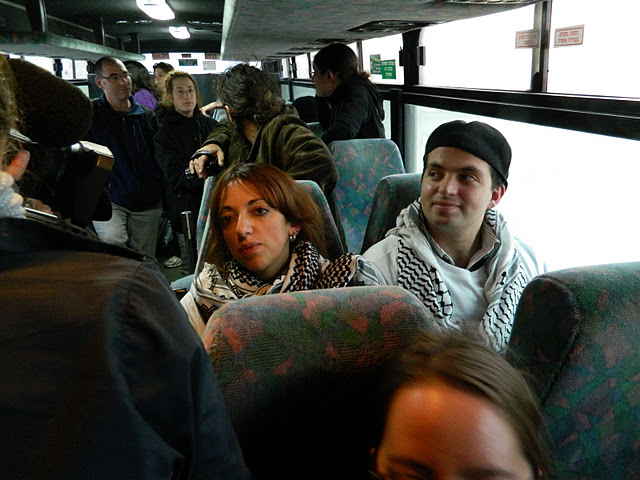Tag: Freedom Riders
-
In Palestine, to exist is to resist
by Melinda Tuhus 24 January 2012 | In These Times Behind the headlines, Palestinians are using nonviolent direct action to protest the status quo. WEST BANK, PALESTINE – On November 15, Mazin Qumsiyeh and other Palestinian activists boarded public bus number 148, an Israelis-only bus that normally takes Jews from the Israeli West Bank settlement…
-
Freedom Rides to Jerusalem
by Anne Paq 17 November 2011 | Chroniques de Palestine On the 15th of November, Palestinian activists from the West Bank boarded a segregated Israeli bus used by Israeli settlers to Jerusalem in an attempt to highlight the regime of discrimination on freedom of movement in place in the Occupied Palestinian Territories and the fact…
-
A visual chronology of the Freedom Rides
by Dena Elian 16 November 2011 | Sixteen Minutes to Palestine On November 15, 2011, six Palestinian Freedom Riders boarded a settler-only bus traveling to occupied East Jerusalem to openly challenge Israel’s apartheid policies towards Palestinians and its minority populations. The following is a visual chronology of the events.

